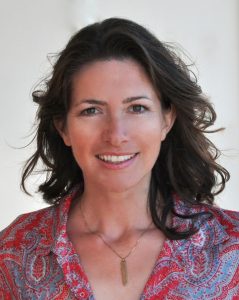COP26, the world’s most consequential climate conference, winds down this week, and the commitments already made by the leaders of countries in attendance are remarkable. A global agreement to halt deforestation. A pledge to drastically slash methane emissions. And dozens of other less publicized deals and plans to protect the world’s ecosystems.
It remains to be seen whether these promises will be enough to matter (or kept at all), but after publishing over 50 stories on climate and environment solutions that work, we at RTBC feel there is cause for optimism. Below, three of our writers and editors explain in their own words why they think we’ll turn things around.
Peter Yeung, Contributing Editor
The coronavirus pandemic has shown what humanity can achieve if we focus all of our energies onto solving a problem. It’s been an invigorating reminder — a shot in the arm, if you will — of the great ingenuity, diversity of thought, creativity and determination that the people of this world are capable of. I’ve found those efforts to be both heartening and humbling.
This spirit of collaboration has to continue because there’s a far greater challenge right on the horizon: irreversible climate change. Let’s not beat around the bush, it’s the biggest story in the world. It’s an existential threat to the planet and our future on it. And those effects are already being keenly felt, from raging forest fires to unprecedented floods and extreme droughts.
But here’s the good news: It’s not too late. According to scientists that know better than I do, we still have time to stop this. And I believe we will. That’s not to say we can relax, or that there won’t be times of serious difficulty ahead. But through the course of my reporting on the climate, I’ve seen so many examples to give me hope.
Over the past few months, I’ve researched and written about the blossoming of community forests, which give power back to the people while halting deforestation; the brilliance of solar-powered restaurants, which are making our meals sustainable; and the “peevolution,” which is showing how recycling urine could help flush away threats to the environment. Those are just a few examples and my talented colleagues have highlighted many more.
If only there were some sort of international summit of the world’s leaders to agree to implement policies like these and set the planet on a sustainable path, I hear you cry. As it happens, one is ongoing as we speak. The eyes of the world, including my critical pair, are on COP26. The time is now.
Michaela Haas, Contributing Editor
Look for the helpers!
It’s easy to despair when we hear that we humans wiped out two-thirds of wildlife over the last 50 years. These are the moments when I think of the famous advice Mister Rogers’s mom gave her son: Look for the helpers! You will always find people who are helping.
While world leaders meet in Glasgow for the pivotal United Nations climate summit, I appreciate women like Kristine Tompkins who managed to protect millions of acres of precious wild land. She says she could be “cynical and view the whole thing like rolling a peanut onto Pikes Peak with your nose. But don’t throw out audacious and seemingly impossible concepts because they’re difficult.” She quotes a recent study showing that 85 percent of the population is now being affected by climate change. “So it’s not just me anymore. This crisis will change people. People understand what really has to happen.”
My favorite part of working for Reasons to Be Cheerful is speaking with incredible people who are actively moving the needle, such as architect Marcella Hansch who focuses on cleaning plastic trash from rivers before it reaches the ocean; teenagers like 15-year-old innovator Gitanjali Rao who invented a lead test for water; fourth-generation business owner Alberto Candiani who produces the world’s first compostable jeans; a physicist who recognized the need to eliminate CO2 30 years ago; the weather makers who are determined to turn deserts into forests; and entire communities that prevent deforestation.
These are people who make a real, tangible difference for the environment, and for us. I’m proud that Reasons to Be Cheerful features many innovators, scientists and students who are implanting effective, reproducible solutions. This is what gives me hope and keeps me going.
Will Doig, Editor
“Whatever happened to the hole in the ozone layer?” a headline recently asked as if the hole in the ozone layer were a child star from the 1980s. The short answer is: like most of those kids, it mostly disappeared. How did that happen? We can thank a global cooperative effort to ban chlorofluorocarbons. The human race pulled together and stopped a calamity.
This was back when “the environment” didn’t even crack the top five of most people’s concerns. But even then, in relative obscurity, people were working on ways to stop climate change. Earlier this year, I learned that Morten Harket, the lead singer of A-ha (an ‘80s celebrity!) took a spin around Oslo in 1989 in an electric car and started a revolution. Thanks in part to the heartthrob’s stunt, EV usage in Norway went through the roof. Today, 90 percent of cars sold there are either hybrid or electric.
This story made me realize that change often comes from the places we least expect. Back in the ‘90s, a German scientist named Klaus Lackner suggested we could suck CO2 out of the atmosphere. Everyone thought he was bonkers. But a couple of decades later, that same scientist is leading the effort to build an “artificial forest” of carbon capturing machines in the Arizona desert — and last week, the U.S. Department of Energy made this tactic a climate priority.
Even solar power was seen as a novelty during my lifetime. It wasn’t until 1982 that the U.S. built “Solar One,” its first large-scale solar power plant, an experimental prototype in the California desert. Today, when the sun is shining bright, over 90 percent of California’s energy can be renewable.
These innovations, now seen as some of our best tools for fighting climate change, began to sprout a time when protecting the climate was a fringe idea. But that’s how change always happens. Ideas that were once outlandish are now mainstream. Pilot projects become standard policy. Wacky ideas turn into conventional wisdom. We need to move faster, yes. But it’s worth stepping back occasionally to acknowledge how much we’ve accomplished in a relatively short amount of time — and then get back to work.









